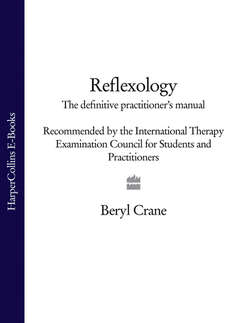Читать книгу Reflexology: The Definitive Practitioner's Manual: Recommended by the International Therapy Examination Council for Students and Practitoners - Beryl Crane - Страница 49
General observations
ОглавлениеGeneral appearance should always be noted; this can only be achieved by a methodical scrutiny of the person as described below to give some idea of their problem.
Being aware of and paying attention to the movement and the physical mannerisms of the person entering the room is of the utmost importance, as many things are noticeable in the first few minutes. These are important as people do not consciously adjust their movements or their mannerisms whilst unaware that they are being observed.
When walking, for example, do they walk on their heels? This could indicate hypersensitivity in the plantar region of the foot, which may indicate peripheral neuropathy. If there is a spring in the step it indicates that the supportive ligaments and muscles are well developed and there is less probability of a spine problem. Is the person flexible in movement when walking? This is a good sign and it shows there is little tension in the body. If the reverse is evident it often indicates the patient is stiff and rigid, and shows that the muscles are tight. This could be due to a muscle injury, a neurological disorder and even arthritis affecting the joints.
The position of the head is important to note. When the body is in the correct position the head is straight and lifted up, the shoulders are relaxed, and this indicates a lack of tension in the person. When the body leans forward it may create pressure on the cervical region, and pressure on the frontal area of the brain; this is thought to be a contributing factor to depression. It also causes pressure on the lower lumbar spine because the weight is not central. The word ‘depression’ means ‘pressure’ or ‘weighing down’; a posture with a dropped head and hunched shoulders may signify that the person is in a low state of mind. Such a posture can in turn cause pressure on the thoracic cavity and abdominal organs. If the shoulders are drawn in the breathing capacity is also diminished; this lowers and impairs the ability of the circulating blood to reach all areas of the body. Many of the problems associated with rounded shoulders are those linked with respiration, such as asthma, bronchitis and upper respiratory infections.
When clients are seated, the therapist should note the following. Are they relaxed? Are the hands held still and at ease, showing a state of calmness and peace, or are they fidgeting, squeezed or twisted in a wringing action, showing unease and discomfort? Other visible signs of unease include plucking of hair and other movements. For instance, do they cross and uncross their legs, cross their feet, or move around? Attention should also be paid to clients’ speech. For instance, do they speak fast without drawing a breath? What is the tone of the voice; is there modulation, or is it high pitched?
All of these behaviour patterns could indicate unease, but there are other explanations. For instance, continual leg movements could be due to discomfort in the lower back or hip area. We should not make a hasty diagnosis, or jump to conclusions. However, the initial observation should enable the therapist to begin to form an assumption of what the problems may be.
A number of specific features can also be observed and are particularly significant.
